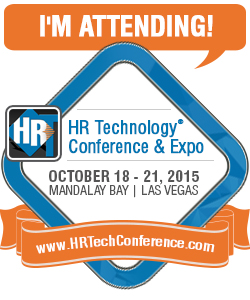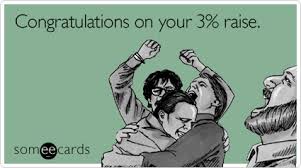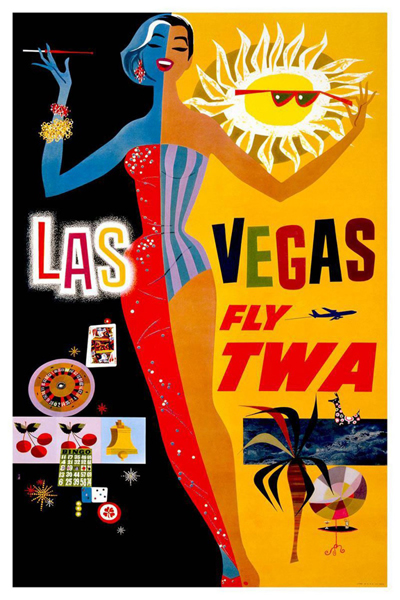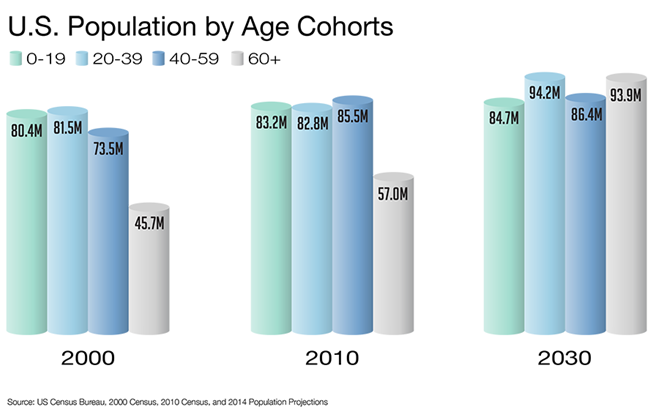NOTE: This is a (slightly) updated version of my Top 10 Tips for HR Tech Conference Attendees that I ran last year just before the Conference. Reading it over, I was not surprised how just about all my advice from last year still applies. I am clever that way. Plus, I have the inside scoop. Hope to see lots of readers at the event.
And by the way, you can still register for HR Tech 2015 with Promo Code LINK15 and save an additional $150.00 on top of the $50.00 PreShow rate discount – That’s $200.00 in savings when you register by Midnight EDT Thursday Oct. 15 at www.hrtechconference.com
It's now a little more than one week until what is in my completely biased view as the Conference Co-Chair the best annual event for HR professionals, the HR Technology Conference in Las Vegas. If you are coming out to the event next week, and I hope lots of readers are, I wanted to serve up my slightly better informed view of than most have and give you my list of the Top 10 Tips for getting the most out of your HR Tech Conference experience.
So here goes, (in no particular order, save this is how they came to me in a semi-coherent state late last night).
1. Take advantage of the Conference's 'Welcome' day activities on Sunday, October 18
Building upon what was a really popular and well-received idea from last year, once again at HR Tech, we will have several pre-conference educational sessions (offered at no extra charge for full conference attendees). These pre-conference sessions kick off at 1:15PM on Sunday with 'Workplace, Wearables, and Workout Wednesday' sponsored by FitBit, and then continue with three more pre-con sessions (from Ceridian, Salesforce, and IBM) at 2:30PM. These pre-con sessions are a great opportunity to jump-start your learning and kick off the Conference experience.
Then in what is a first for HR Tech, we will have our popular "Awesome New Startups for HR" demonstration General Session also on the Conference's opening day, starting at 3:45PM. We have a fantastic set of HR Tech startups this year and you will not want to miss this interactive and dynamic General Session.
And immediately after that, our Opening Reception (with drinks and appetizers) kicks off in the sold-out Expo Hall, (which will too be Open and with the Exhibitors ready and eager to meet you. All in all, the opening day and night of HR Tech should be fantastic and I encourage all attendees to take advantage of these opportunities.
2. Don't go overboard on Sunday night once you leave the Opening Reception
HR Tech is closer to a marathon than a sprint. I suppose it is more like a 10K or maybe even a half marathon. Either way, you jump out of the starting line all full of energy and adrenalin and excitement, but after a couple of miles of running at a pace you know you are not ready to sustain you are definitely going to hit the wall. And it might get ugly. In fact, seeing as it is Vegas, it almost certainly will get ugly. My point is you want to build slowly. And most of the really big, fun, over the top night time social events are on Monday night the 19th and Tuesday the 20th anyway. So have fun on Sunday night, but just remember you are not as young as you used to be. Leave something in the tank for the middle and end of the race.
3. Give something back
This year at HR Tech we are proud and excited to offer attendees the opportunity to 'work' for a good cause while also having some fun. HR Gives Back is working to raise funds towards finding a cure for Parkinson's, which is a cause near and dear to the hearts of many in the HR Tech community. At the Conference, and in partnership with FitBit, attendees will have the opportunity to participate in challenges and activity tracking in order to help raise funds for this great cause. Look for signage and information about these efforts at the Conference, and in the interim check out HRGivesBack.net for more information.
4. Plan out your schedule, but be flexible too, and leave some time to explore
Once again the agenda this year is packed and we have a record number of tracks and concurrent sessions. In most of the concurrent session time slots, there are as many as 10 sessions running at the same time. So you are going to want to spend some time in advance thinking about which sessions you'd like to attend, and even make a backup selection (or two) just in case we have to play nice with the Fire Marshal and cap off attendance in any given session. But also be sure to leave some room in your day to linger a little longer in the Expo Hall or take in one of the vendor demo sessions that will be running on Monday or Tuesday. Or even just to have some time to chat with some of the new friends you have made, (more on that to come). My point is this, it is a Conference, not a synchronized swimming contest - you don't have to know every step you are going to take in advance.
5. Don't travel (all the time) in the same pack
If you are attending the Conference with some of your co-workers, (which is great), make sure to not spend all of your time traveling in tandem. Split up and cover some different sessions, make sure to engage with other folks during general sessions and meals, and maybe even (horror), hit some different parties after hours. You want to make sure you are not just seeing and interpreting things through the same lens that you use back in the office, sometimes breaking away from your co-workers, even for a little while, can help you to do this. Besides, you have the other 361 days of the year to spend with these people, and they are probably sick of you too.
6. Say 'Hi' to me, or rather, anyone that you really want to meet and connect with
Of course I want to meet as many people as I can, but you do too. And chances are you might want to meet and chat with one of our amazing speakers or one of our industry experts that will be leading panels and sessions throughout the event. So make sure you do! All of these execs and leaders are extremely approachable and generous with their time and their insight. So if there is someone, anyone, you want to meet, then don't let a long line of people stop you from doing just that. One of the best aspects of the HR Tech community is how much everyone wants to help, especially HR leaders that are interested in how HR technology can help them and their organizations move forward.
7. Take a rest somewhere in the middle of the run
Ok, much like I am ready to take a breather half way into this post, (at about the 1000 word mark and counting), at some point during HR Tech you will want/need to take a little time to recharge. This could mean ducking out a little early from one of the parties, taking a power nap back up in your room after the last session of the day and before heading out for the evening, or it could be as simple as passing on that third dessert from the buffet. All I am saying is you probably can't go full speed all day and night in Las Vegas for too long and come out feeling good on the other side. Find a spot to get some rest, maybe hit the spa or the pool, (it will be pretty hot), and get ready for the last part of the run.
8. It is ok to talk to the vendors in the Expo Hall. Even ones you have never heard about.
I know for attendees the overwhelming tendency of Expo visit time is spent walking from place to place, checking out the vendors you are familiar with and/or interested in learning more about, and maybe entering a contest or two. And while you can easily spend hours talking with vendors and people you know, or maybe are currently using in your organization, I really recommend spending some Expo time checking out and actually learning about at least a few vendors that you have never heard about before. Now I don't want to name specific names, (because there are just too many and I will get in trouble as I would have to leave some out), but you know who you don't know, (if that makes sense), and I can assure you there are dozens of amazing solutions just waiting to be discovered. And don't miss our Startup Pavilion, where a record 30 HR Tech startups will be exhibiting in one area. If you are not sure who to check out, send out a Tweet on the#HRTechConf hashtag and just ask. Not using Twitter? Well that is a problem we will have to solve another day.
9. The General Sessions are big and crowded and long. Go to them anyway.
Yes the General Session rooms are massive. And crowded. And by the time you get there lots of the good seats are taken. But you still should attend them anyway. We have the industry famous 'Awesome New Technology' showcase for the more established HR solution providers on Tuesday morning and we will follow that up with the demonstrations from the first-ever HR Tech Hackathon on Tuesday afternoon. Both of these General Sessions are the kinds that audiences at HR Tech love - a chance to see up close and personal the best in HR tech. You definitely want to be blown away by the latest and greatest innovations in HR technology in the 'Awesome New' session and in the Hackathon. These General Sessions bring the entire community together and you simply have to be a part of that.
10. Don't skip Wednesday.
Assuming you made your travel plans accordingly and are still going to be in Las Vegas on the final morning of the event, you want to make sure you drag your tired, sorry self out of bed to make it down for the last half day of the Conference. We have a fantastic closing day keynote from Jim Whitehurst, President & CEO of RedHat. And in a first for HR Tech we have a great 'Ideas and Innovators' session planned, where 10 HR and HR Tech rock stars will speak using the fast-paced and popular 'Ignite' format. This session will include great people like Mike Psenka, Eric Winegardner, Trish McFarlane, Yvette Cameron, Kris Dunn and many more. Trust me you will not want to miss this, it is the closest thing to a live sporting event or a piece of performance art that you will ever see at a conference.
And in true Spinal Tap fashion, here is an 11th tip...
11. And this is the most important one - Connect with as many people as you can.
This is kind of a boring tip since everyone who gives advice about these kinds of things always includes something like this. But just because everyone tells you to do this, doesn't mean it is bad advice. The truth is the most enduring value anyone (even me) gets from HR Tech or any large event comes from the people you meet, the relationships you build, and the connections you forge. Your next customer, next vendor partner, next boss, next employee, or maybe your next new best friend just might be at HR Tech next week too. But you have to take some initiative to connect. And for some folks, (again me too), that is not always the easiest or most natural thing to do. But you should try anyone. Even if you set a simple goal of connecting with even one or two new people each day at the Conference it will be worth the effort. And if you are finding that to be too hard, then find me and say 'Hi'. I am easy to spot, as I will be the best-dressed guy at the Conference. Ask anyone.
Ok, that is it, I am out. I also want to thank regular blog readers who might have gotten a little tired of all the HR Tech Conference content on the blog lately. Next week there may not be much new here (probably) while I am doing final prep and heading out to the event, but I will get us back to the regularly scheduled nonsense after that.
Have a great weekend!


 Steve
Steve



